This morning on Facebook, I shared pictures of our fruit tree orchard here at Seven Oaks Farm (that’s where I write to you from…my little farm in south central Virginia.) People seem to love seeing pictures of the trees in bloom, and I often answer a lot of questions about growing fruit. I published an article last year on growing peaches in Virginia in Virginia Gardener magazine, and one on growing apples in small spaces for Dave’s Garden. I suddenly realized that I’d never shared how-to articles about growing fruit in your backyard. So for the next several weeks, I’ll be putting together a series on how to grow many different kinds of fruit in your backyard: berries like strawberries, blueberries, raspberries, and blackberries; tree fruits like apples, peaches, plums and pears, and more; and unusual fruit, like lemons.
An Introduction to Growing Fruit in Your Backyard
First let me ask you: why should you bother growing fruit in your backyard?
Today, we have so many wonderful choices in the supermarket that it’s mind-boggling to think about it. I remember as a kid growing up on Long Island in the 1970s how peaches were only available during July and August. The rest of the year, the supermarket had canned peaches, but fresh peaches were a rarity, and if they had them, they tasted terrible and were probably so expensive they were out of reach for my family.
Now flash forward to today. I can visit any supermarket in my rural town and find fresh peaches available. They may be imported from Chile or Argentina, but they’re available. (Does anyone else but me feel a strange sense when they consider that the fruit in their kitchen has traveled further than they have? Or is it just me?)
So with all of this variety, and all of this richness, why bother growing your own fruit?
After all, homegrown peaches look like this:
They’re blotchy, and some have rotten spots. They don’t all ripen at the same time. Most, including these Elberta peaches I harvested last year, are bitter until canned.
So why bother growing fruit in your backyard?
Growing Fruit at Home Reduces Your Impact on the Planet
There’s something slightly creepy about the fact that we fly peaches in from Chile and Argentina. Yes, it’s good for Chilean and Argentinian farmers, but is it really good for us, and for the planet? What about the fossil fuels burned to ship those peaches to us; is that good for the planet? Okay, so maybe the jets or boats or however they were transported are coming to America anyway, but still…I guess it just bothers me that my fruit gets shipped halfway around the world just to satisfy the cravings of the wealthiest nation of the world.
Growing Fruit in Your Backyard Is Sustainable
One small fruit tree doesn’t take up that much room, but it can produce some tasty fruit. Instead of cutting down forests to plant orchards, if we all grew one fruit tree, we could make a difference. We could feed ourselves and our families and maybe have a little left to share.
Growing Your Own Fruit Reduces Pesticide Exposure
This was a big reason why I wanted to grow my own fruit. Do you know how much a commercial orchard must spray its fruit each season to harvest those picture-perfect peaches, apples and pears?
A lot. An awful lot.
How do I know? Because I spray my trees, albeit with organic insecticides and dormant oil. I can’t harvest a perfect apple, peach or pear, although I think I’ve come close…
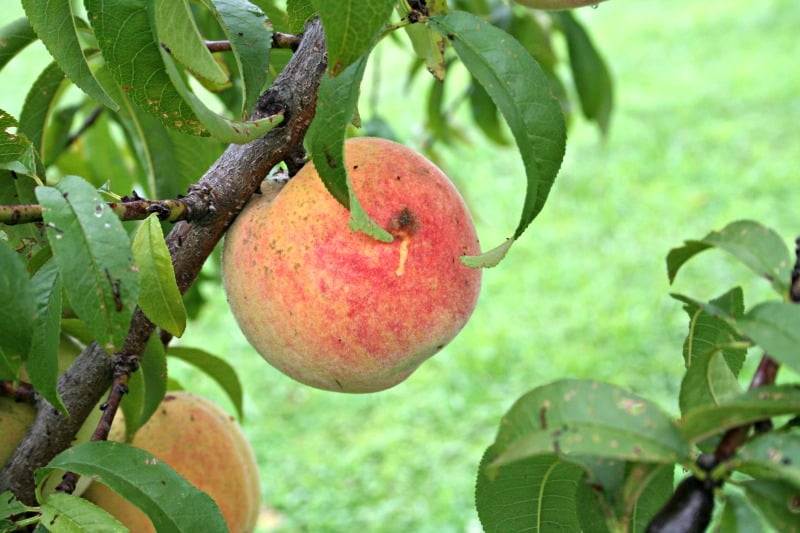
Pretty as a peach….but still has a tiny mark on it! Wouldn’t make it to the grocery store but fine just the same.
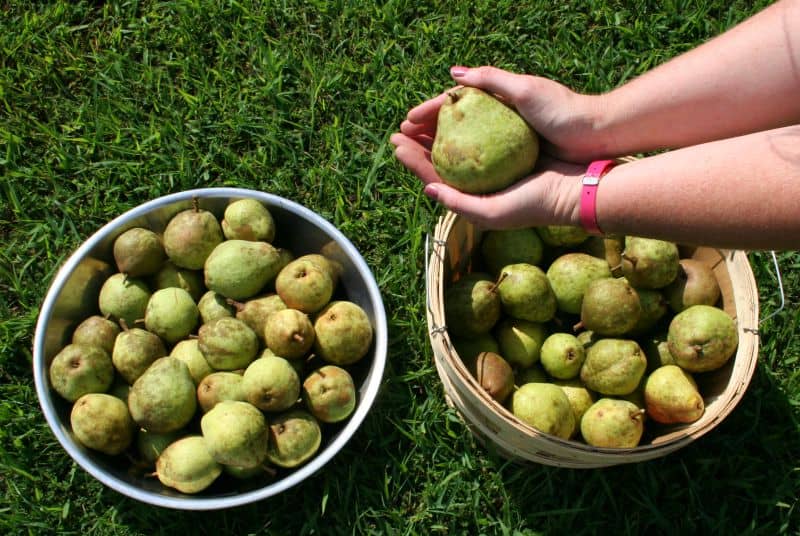
The pears taste great, but would you buy these at the store? These weren’t sprayed last year. They tasted great, but looked damaged.
On average, commercial orchards spray during the dormant period, budding, flowering, fruiting and developing stages. They spray for lots of things, but the bottom line is that those perfectly red, shiny, symmetrical apples you see at the store are the result of a lot of work, and chemicals, and more work and chemicals to keep them looking pretty.
I’m not a purist. I know that my environment is surrounded by chemicals. I don’t go crazy with the organics, but I take the approach of “If I can reduce my use of chemicals, I do it” mindset. When it comes to growing the edibles in my yard – the fruit, vegetables and herbs I cherish – it’s fairly easy to avoid pesticide use. I can most of the fruit that I harvest, so it doesn’t matter what it looks like. I can cut out a worm or remove a damaged section of fruit without impacting the harvest. It’s a win-win as far as I am concerned. When I grow my own fruit, I reduce both my own personal pesticide exposure and the amounts of pesticides pumped into the environment.
It’s Beautiful. And Fun. And Beautiful.
Growing my own fruit has its own reward: beauty.
Fruit trees are beautiful…
There is nothing more beautiful than a fruit tree in bloom. I think apple trees are my favorite. Not only are the blossoms beautiful, but the scent around an apple tree in bloom is like a light, gentle perfume. Butterflies love apple blossoms. I’ve seen trees covered with Eastern swallow tail butterflies when the apple trees are in bloom.
These are things you won’t find when you shove a few shiny waxed apples that all taste the same into a plastic bag at the grocery store. Growing fruit in your backyard offers a bounty of rich rewards, exquisite and gentle rewards, like treasures offered from nature. Join me in this adventure, won’t you?
If you enjoyed this article, you may also enjoy:
Keep growing!

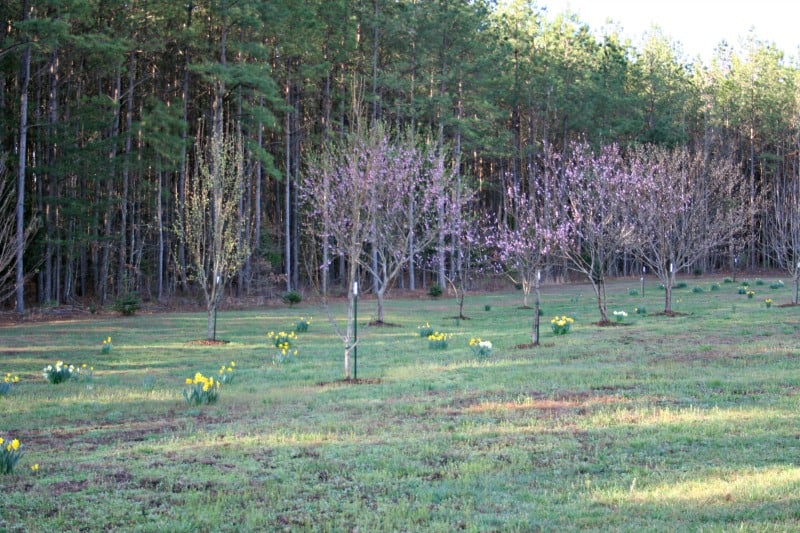
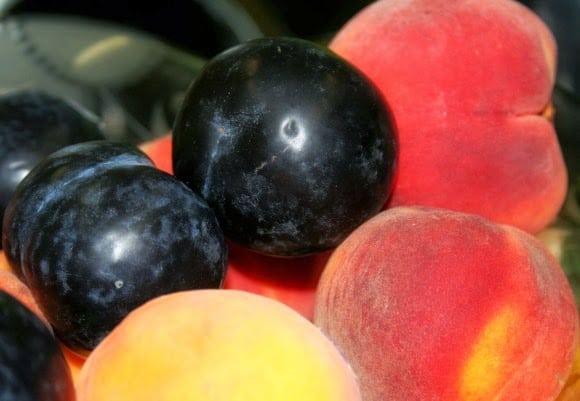

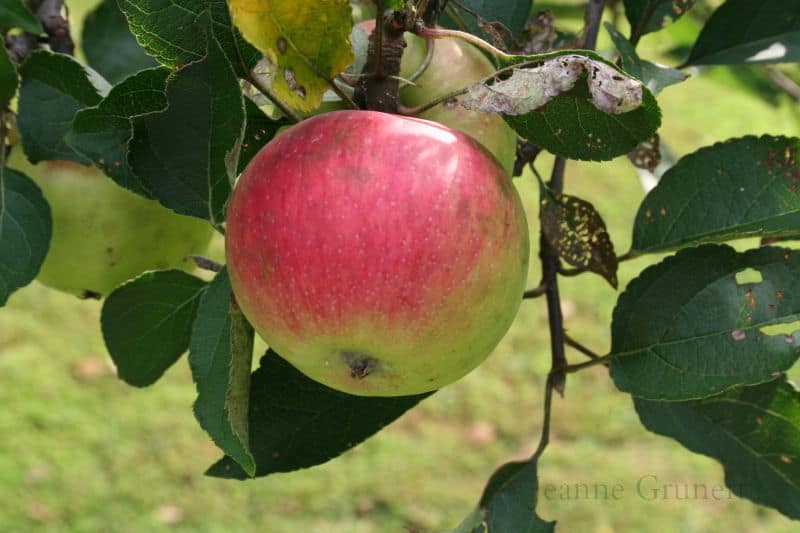
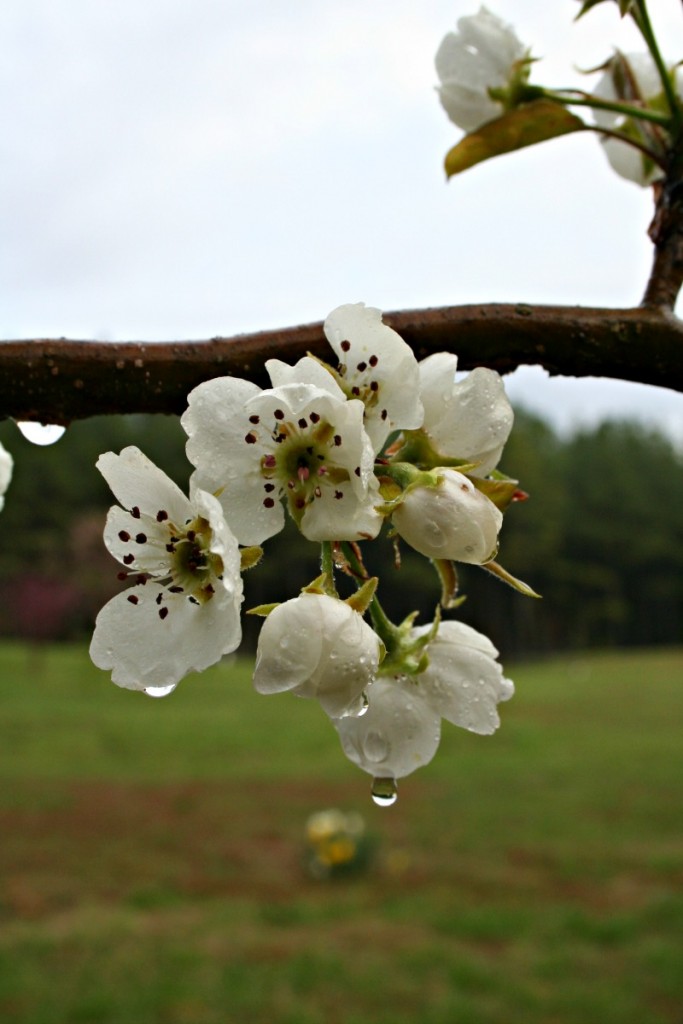
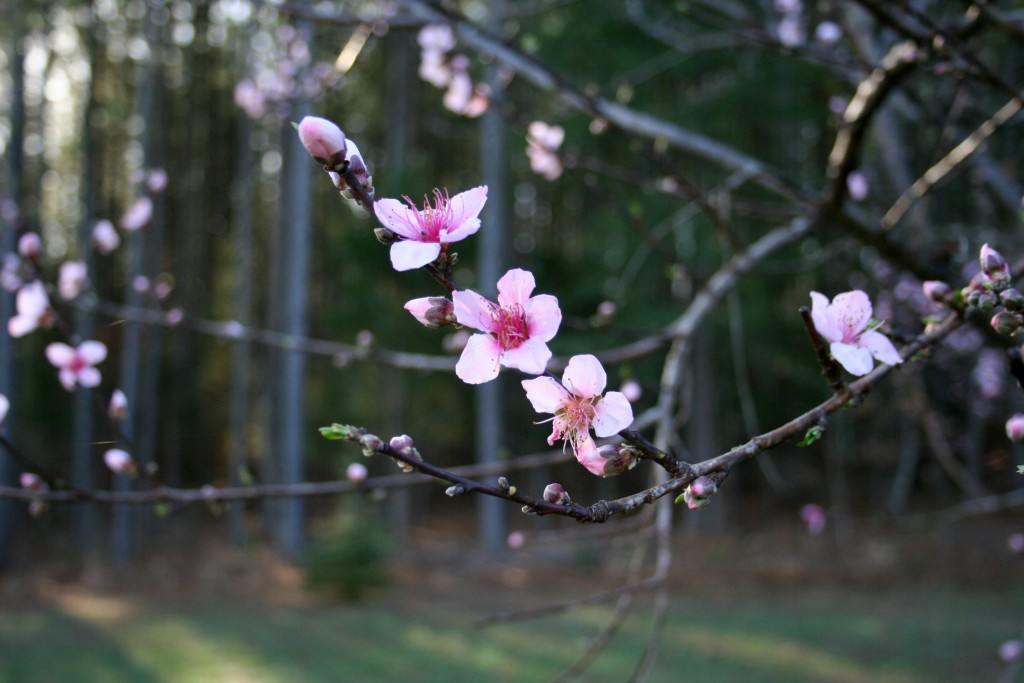
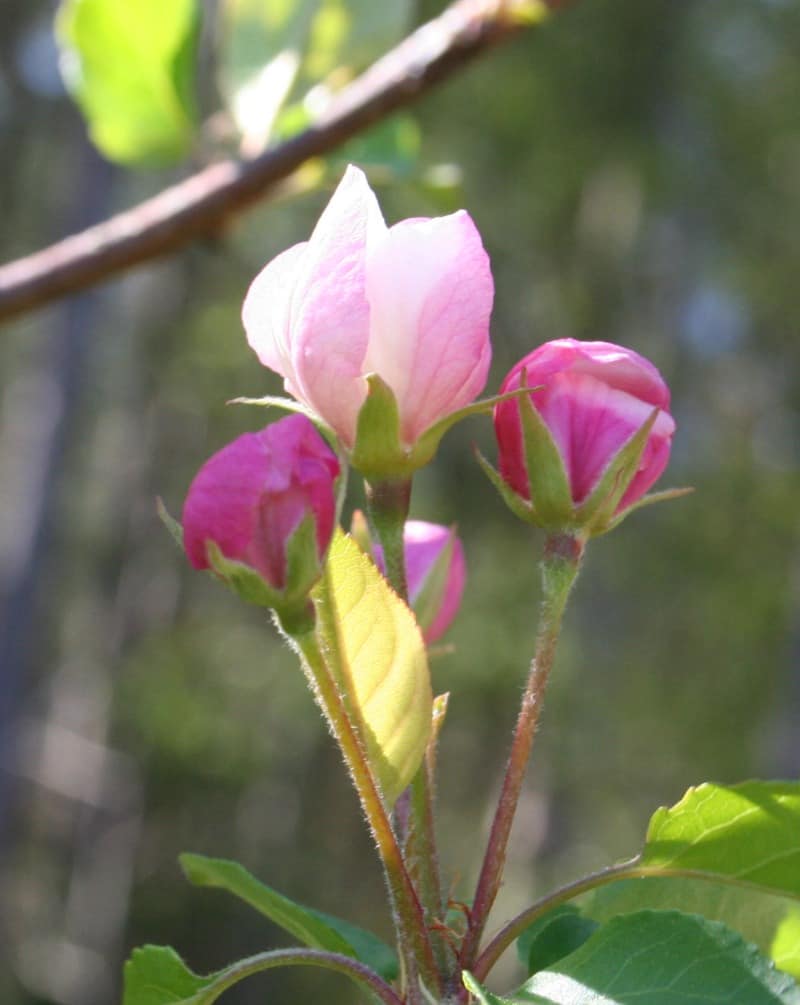





LOVE IT! Thanks Jeanne!
This article was awesome I am going to follow you for the first time in my life I plan on buying a piece of property I was searching the internet to find out what kind of fruits and other foods I can grow on my property I am so pleasantly surprised I think you so much for the time you took to share this with us